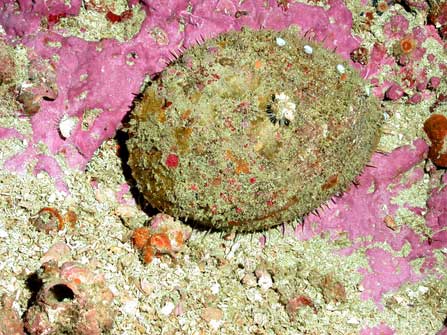Lack of rain supports CICESE climate change model: Winter along coast 60% drier

We recommend: "USAN PRONÓSTICOS AMBIENTALES PARA RECUPERAR PESCA DE ABULÓN" (Photo: Courtesy NMFS).
ENSENADA
After registering precipitation levels 60% below the normal winter average along the Baja California coast, the CICESE 2 Climate Model developed by the Ensenada Center for Scientific Research and Higher Education (CICESE), is predicting only 40% of the usual rainfall for the rest of the current season.
According to data from the National Water Commission (Conagua), the average winter rainfall in the region is almost 250 mm. Up to this month, the recorded rainfall has been barely 60 mm, compared to the expected amount of around 150 mm. For the period of November 2013 to March 2014, the CICESE 2 Model predicted between 20% and 40% of the average precipitation for the region (or 50 to 100 mm), supporting the accuracy of the prediction model up to this point.
The outcome of the CICESE 2 Model was presented this past Nov. 12 at the 25th Mexican Climate Prediction Forum in Aguascalientes. These forums are organized by Conagua’s National Meteorological Service so that institutions such as CICESE can present the results of their studies to the appropriate agencies in charge of issuing official weather predictions.
“In November, we said that it was going to rain less than normal this winter. And so far, it has rained only 15, 20 or 40 percent of the normal average, which is in line with what we said and therefore supporting the accuracy of the prediction,” said Dr. Edgar Pavía López, researcher in CICESE’s Oceanography Department, and one of the developers of the climate model.
CICESE 2 is a statistical model that uses global oceanic and atmospheric observations (sea surface temperatures and geopotential height) made by Ramón Fuentes Franco, who received his Ph.D from CICESE while working under Pavía and Dr. Federico Graef.
Fuentes currently works at the International Centre for Theoretical Physics in Trieste, Italy, but continues to collaborate with CICESE.
Pavía adds that they hope to validate the model’s results for the November 2013-March 2014 season in the rest of the country, mainly in the northern states, with the goal of determining if the CICESE 2 model’s prediction was accurate.
“We have seen in other years that the prediction has been successful in various states,” he said. “So what we are going to do is see where it works better, in order to improve the accuracy of the system, while continuing our investigation and development of the new CICESE 3 model in the future.
